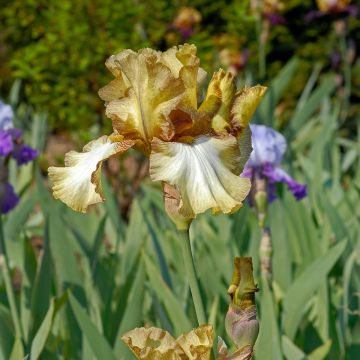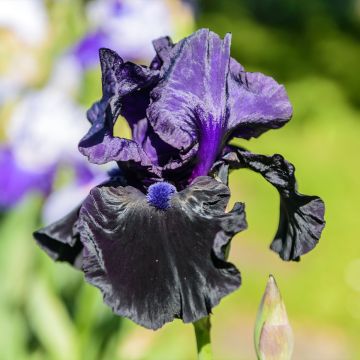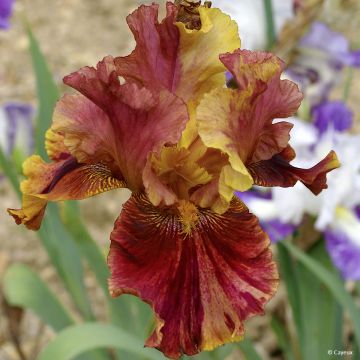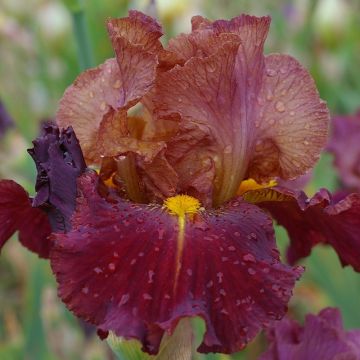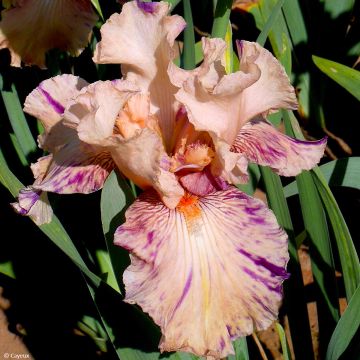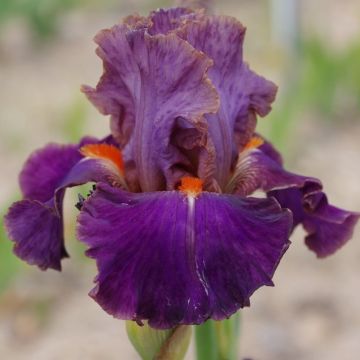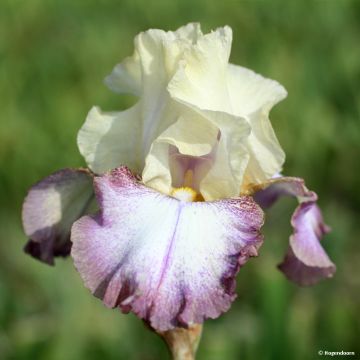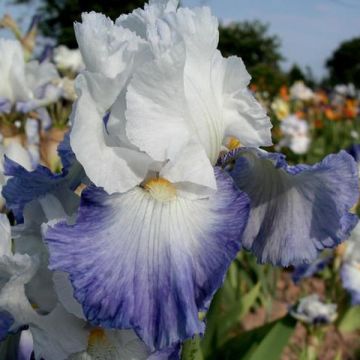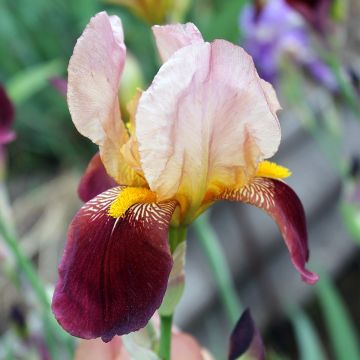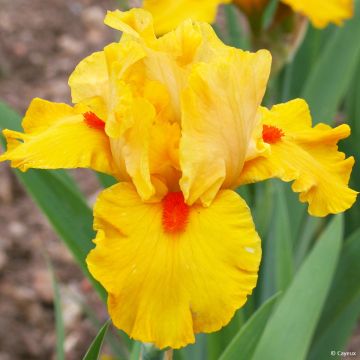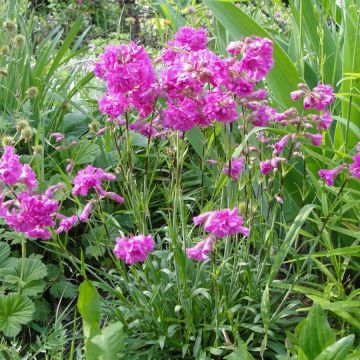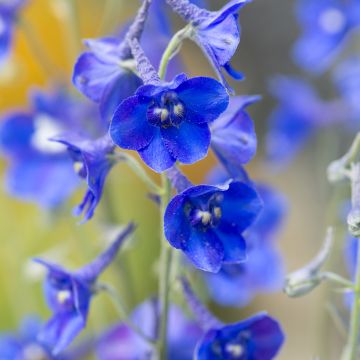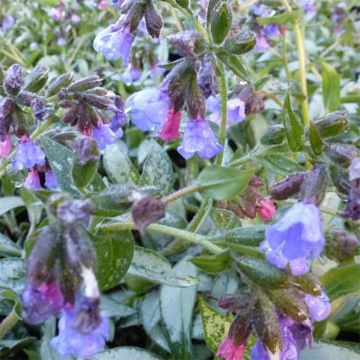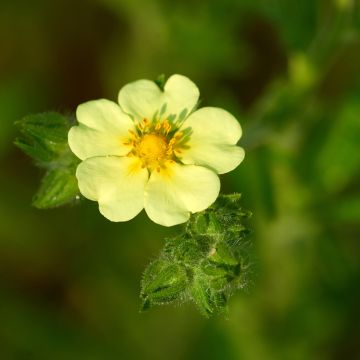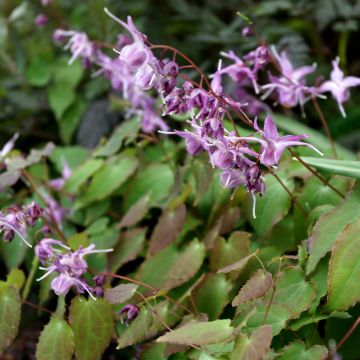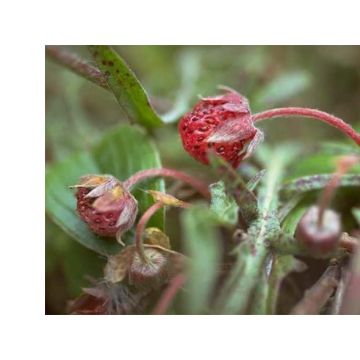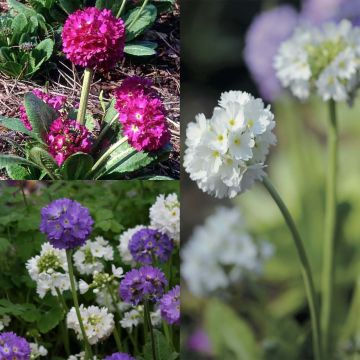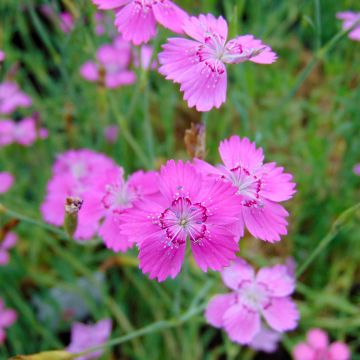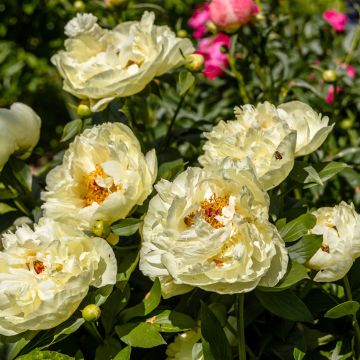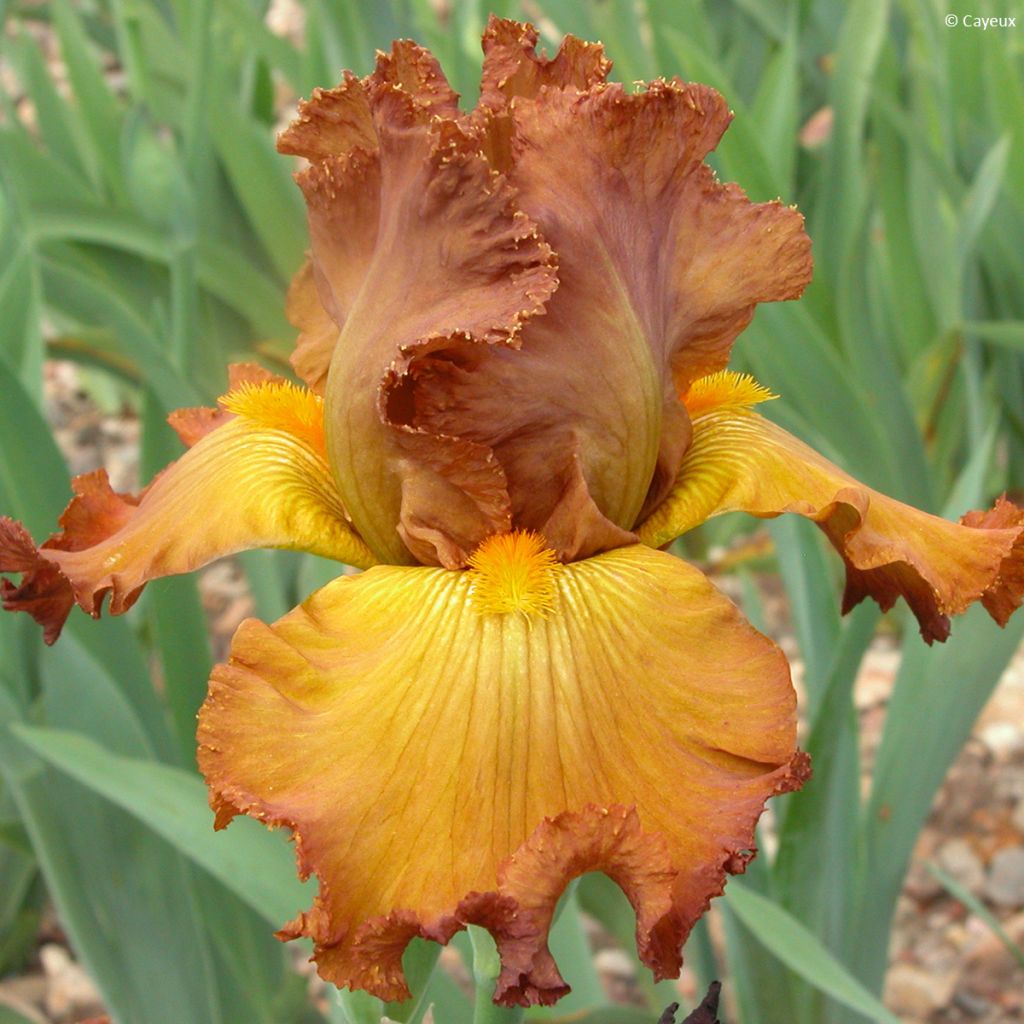

Iris Tabac Blond - Tall Bearded Iris
Iris Tabac Blond - Tall Bearded Iris
Iris germanica Tabac Blond
German Iris, Bearded Iris
This item cannot be shipped to the selected country
Delivery charge from €5.90
Delivery charge from €5.90
More information
Delivery charge from €5.90
Delivery charge from €5.90
More information
Schedule delivery date,
and select date in basket
This plant carries a 12 months recovery warranty
More information
We guarantee the quality of our plants for a full growing cycle, and will replace at our expense any plant that fails to recover under normal climatic and planting conditions.
From €5.90 for pickup delivery and €6.90 for home delivery
Express home delivery from €8.90.
From €5.90 for pickup delivery and €6.90 for home delivery
Express home delivery from €8.90.
Does this plant fit my garden?
Set up your Plantfit profile →
Description
Iris 'Tabac Blond' is a variety of tall bearded iris that stands out for its warm and bright colours in shades of coppery yellow and light brown. Its flowers are not huge, but nicely curved and well-proportioned compared to the stout flower stalk. 'Tabac Blond' blooms in spring, between the beginning and middle of the tall bearded iris season. It will thrive in the sun in any well-drained soil, even dry in summer.
Iris 'Tabac Blond' is a deciduous rhizomatous perennial plant that belongs to the Iridaceae family like all German iris. It is one of the many cultivars obtained for centuries, whose controversial origin is debated around the number of chromosomes of potential ancestors. It should be noted that Garden Irises have European origins. 'Tabac Blond' is a fairly low variety, reaching 80 cm (32in) high when flowering, with a strong floral stem bearing many flower buds. The clump will spread quickly, with no theoretical limit over time, as the central rhizomes become bare in favour of the outer rhizomes. The foliage consists of long sword-shaped, glaucous green, highly veined leaves. Flower stems appear in April and bloom in May, earlier or later depending on the climate, from the top down. Each flower is composed of 3 upright light brown petals, 3 semi-horizontal coppery yellow sepals, and 3 hairy orange-yellow beards. The warm colour of this plant is enhanced by the silky and iridescent texture of the petals and sepals. This variety has a slight, sweet fragrance.
Obtained by Cayeux, 2006.
To accompany irises, choose plants based on their needs (exposure, soil...), growth (low plants or light foliage), appearance and flowering time. For example, Gauras will cast little shade on irises and keep the flower bed attractive all summer. California Poppies (Eschscholzia) will be content with dry and poor soil like irises. Perennial geraniums, salvias, and Libertia also go well with irises. Slopes can be stabilised by a dense planting of vigorous old varieties that require little care. The vegetable garden can accommodate a few clumps of irises for cut flowers.
Flowering
Foliage
Plant habit
Botanical data
Iris
germanica
Tabac Blond
Iridaceae
German Iris, Bearded Iris
Cultivar or hybrid
Other German Iris - Bearded Iris
Planting and care
Do you have a very sunny location, rather dry in summer?
This is the ideal location for irises! In the shade, they grow but do not flower. They are hardy and do not need winter protection. Well-drained soil is perfect, even dry and chalky or stony. Soil that is too wet can cause the rhizome to rot. Plant from July to September to allow the rhizomes time to grow and develop new roots before winter. They should be planted immediately after purchase for best results. Plan to divide the irises every 4 years or so to give them fresh soil. They have vigorous growth and require space to develop and flower well. Plant with a spacing adapted to the size and vigour of the variety: about 34-50 cm (13-20in) for tall ones. Always consider the direction of growth of the rhizomes by arranging them in a star shape, with buds and leaves facing outward, and spacing them well away from other varieties so they have room to grow.
Planting
Dig a hole that is wide and deep enough. Make a conical mound of soil on which to place the rhizome and spreading roots. Cover the roots. The rhizome needs to be level with the surface of the soil. It should not be planted in a dip (risk of rotting), so take into account that the soil will settle and the iris will sink. In clayey or damp soil, the rootstock can even be raised on a slight mound. To make the soil cling to the roots, lightly firm and water abundantly immediately after planting. Water 2-3 times if necessary until the plant is established.
Maintenance:
Keep the soil free from weeds by shallow hoeing, taking care not to damage the rhizomes or roots. Weeds shade the irises, retain moisture (causing rot) and attract slugs. Likewise, remove dry leaves. If they are diseased (reddish-brown spots of heterosporiosis), we recommend burning them. Remove faded flowers.
Planting period
Intended location
Care
-
, onOrder confirmed
Reply from on Promesse de fleurs
Spring flowering perennials
Haven't found what you were looking for?
Hardiness is the lowest winter temperature a plant can endure without suffering serious damage or even dying. However, hardiness is affected by location (a sheltered area, such as a patio), protection (winter cover) and soil type (hardiness is improved by well-drained soil).

Photo Sharing Terms & Conditions
In order to encourage gardeners to interact and share their experiences, Promesse de fleurs offers various media enabling content to be uploaded onto its Site - in particular via the ‘Photo sharing’ module.
The User agrees to refrain from:
- Posting any content that is illegal, prejudicial, insulting, racist, inciteful to hatred, revisionist, contrary to public decency, that infringes on privacy or on the privacy rights of third parties, in particular the publicity rights of persons and goods, intellectual property rights, or the right to privacy.
- Submitting content on behalf of a third party;
- Impersonate the identity of a third party and/or publish any personal information about a third party;
In general, the User undertakes to refrain from any unethical behaviour.
All Content (in particular text, comments, files, images, photos, videos, creative works, etc.), which may be subject to property or intellectual property rights, image or other private rights, shall remain the property of the User, subject to the limited rights granted by the terms of the licence granted by Promesse de fleurs as stated below. Users are at liberty to publish or not to publish such Content on the Site, notably via the ‘Photo Sharing’ facility, and accept that this Content shall be made public and freely accessible, notably on the Internet.
Users further acknowledge, undertake to have ,and guarantee that they hold all necessary rights and permissions to publish such material on the Site, in particular with regard to the legislation in force pertaining to any privacy, property, intellectual property, image, or contractual rights, or rights of any other nature. By publishing such Content on the Site, Users acknowledge accepting full liability as publishers of the Content within the meaning of the law, and grant Promesse de fleurs, free of charge, an inclusive, worldwide licence for the said Content for the entire duration of its publication, including all reproduction, representation, up/downloading, displaying, performing, transmission, and storage rights.
Users also grant permission for their name to be linked to the Content and accept that this link may not always be made available.
By engaging in posting material, Users consent to their Content becoming automatically accessible on the Internet, in particular on other sites and/or blogs and/or web pages of the Promesse de fleurs site, including in particular social pages and the Promesse de fleurs catalogue.
Users may secure the removal of entrusted content free of charge by issuing a simple request via our contact form.

































